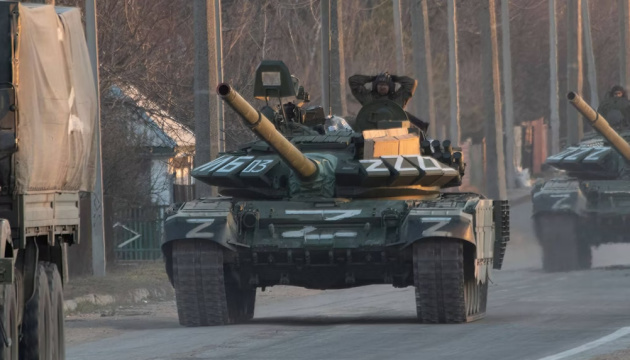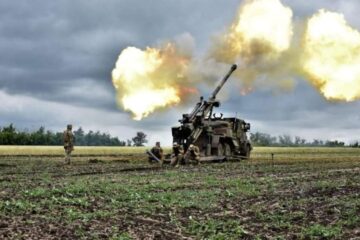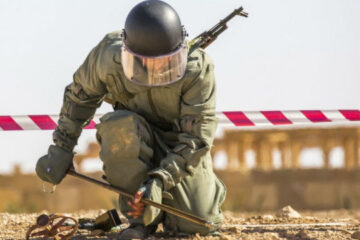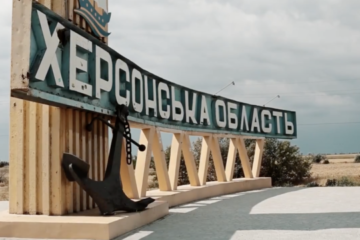Russia is hiding a systemic crisis of its war machine under the guise of a “major offensive”. But this does not negate our efforts to bolster our defenses
The information space is occasionally shaken by reports that Russian forces are preparing to launch a fresh military offensive in the summer-autumn months to maximize pressure on Ukraine and strengthen the Kremlin’s negotiating position in ceasefire talks. Western media, among them The Associated Press, say the Kremlin is eyeing a multi-pronged push across the 1,000-kilometer (621-mile) front line and preparing offensive actions on the front that should last from six to nine months, almost all of 2025. But how true are these predictions?
This has already been much written about, and so we will consider this to be the final, generalizing chord. A careful analysis of the facts, the dynamics of hostilities, and the assessments from leading Ukrainian military experts give a completely different picture – a picture of a deep systemic crisis of Russia’s war machine, which is physically incapable of achieving a large-scale strategic breakthrough. Therefore, loud statements about a “major offensive” look more like a component to information warfare rather than a true reflection of the enemy’s capabilities.
Reality No. 1: A strategic offensive operation that has stalled
Before talking about a forthcoming major offensive, it is worth assessing the outcomes of Russia’s ongoing offensive campaign. As rightly noted by Pavlo Lakiychuk, director of security programs at the Center for Global Studies “Strategy XXI”, the Russians’ strategic offensive operation in Donbas has been going on for a year and a half now. “And if everything had gone according to their plan, they would have already been on the western bank of the Dnieper. They are unable to break through our defenses, the Ukrainians are halting them,” the expert says. That is, the enemy’s main strategic operation, to which significant forces were thrown, has failed to achieve the goals it was supposed to achieve.
Moreover, the ongoing Russian offensive is gradually losing in pace instead of accelerating as might be expected. Ivan Stupak, a defense analyst, points to a clear trend that has been observed since the end of 2024: “…the Russian offensive is currently slowing down… The territory that the enemy captures every month is constantly decreasing. Whereas in November last year they captured 700 square kilometers of Ukrainian territory, this has decreased to just approximately 130 square kilometers captured in March 2025”. This is in stark contrast to the talk about the accumulation of forces for a much larger strike – revealing instead the exhaustion of the offensive potential even within the current operation.
Reality No. 2: Personnel shortage and overall depletion of human resources
Any large-scale offensive takes a huge number of trained personnel and reserves. But Russia has encountered a personnel crisis. Kyrylo Sazonov, Armed Forces of Ukraine officer and political analyst provides telling figures: during a day of intensive assaults, the Russians can lose up to 1,510 troops (according to statistics from Ukraine’s General Staff as of the morning of March 30, – ed.) to capture just a few kilometers (7.6 sq. km) of Ukrainian land. At the same time, according to Mr Sazonov, the planned rate of Russian military personnel replenishment (mobilized + contract soldiers) does not exceed 1,000 people a day. “The overall trend is negative. So what a “large-scale offensive?”, the analyst summarizes.
Oleksandr Kovalenko, defense analyst at the Information Resistance group, expressed himself in the same vein, noting that the Russian occupiers had captured 130 square kilometers of Ukrainian territory during March 2025, which is “the lowest pace recorded since the first quarter of 2024.” That being said, Russian losses in dead and injured had reached 41,160 people in March, meaning Russia had spent 317 soldiers killed and wounded per each square of Ukrainian territory it seized. On average, this amounts to approximately three company-size units per square kilometer,” he explained.
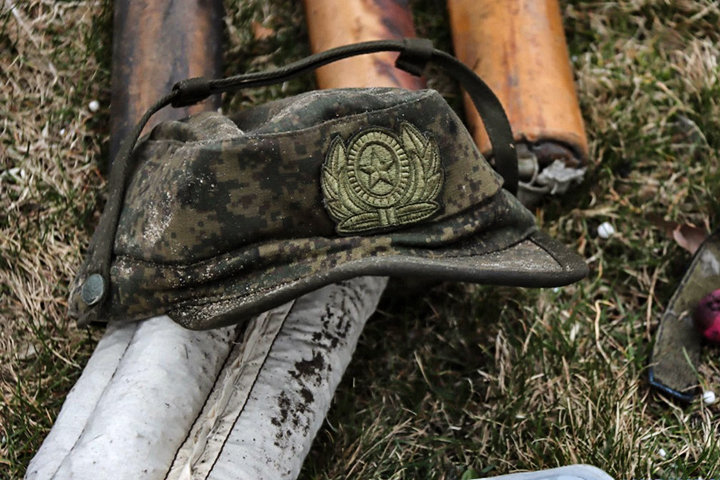
In general, the losses-to-gains ratio has been steadily growing both monthly and quarterly. “Since the beginning of 2025, the Russians have occupied 640 km² of Ukrainian territory, while their total losses amounted to 124,430 personnel, which is equal to 194 invaders eliminated per square kilometer seized,” the expert said. “By way of comparison: this ratio stood at 129 invaders neutralized per each square kilometer occupied in 2024, and grew to 148/1 km² in January 2025. As we can see, the trend persists: the enemy is suffering ever growing losses while seizing less territory.”
Quantitative problems are compounded by problems with the quality of personnel. Kyrylo Sazonov points to the low level of combat training and a lack of experience in the reinforcements arriving at the front lines. Furthermore, Russia is forced to disperse its forces, diverting part of its troops to defend its border areas, in particular in the Belgorod region, where the developments “alarming” for the enemy are ongoing. The assessment given by Pavlo Lakiychuk regarding the Russian Federation’s ability to conduct strategic offensive operations on no more than two stretches of the front line at one and the same time only highlights the acute shortage of strategic-operational reserves to support any sort of “ambitious” plans.
Reality No. 3: Equipment famine and Russia’s low defense industrial capacity
Even with the availability of enough manpower, modern warfare takes equipment. This is perhaps the most severe shortage facing the Russian army. A detailed analysis by Oleksandr Kovalenko reveals a picture of a deep crisis.
Critical shortage of air defense capabilities: The reduction in the available number of air defense systems makes the troops and Russia’s rear areas more vulnerable to attacks with drones and missiles.
Acute shortage of multiple-launch rocket capabilities: The lack of sufficient numbers of multiple launch rocket systems is limiting Russia’s capabilities to provide fire support.
A lack of special-purpose equipment: The shortage of armored repair and recovery vehicles and engineering equipment complicates logistics, repairs, and evacuation operations.
Problems with the availability of armored combat vehicles: The lack of tanks and armored personnel carriers in sufficient numbers precludes the formation of a powerful shock fist.
Depletion of the fleet of specialized transport vehicles: The replacement of armored “Tiger” and “Typhoon” vehicles with civilian vehicles indicates the inability to provide soldiers even with essential requirements for armor protection.
The assessment provided by Oleksandr Kovalenko draws to conclusion that the Russian defense-industrial complex is unable to fully compensate for these enormous losses. “Russia’s defense industry does not have enough capacity to compensate for the losses the Russians are suffering in the war zone in Ukraine every month.” This is a fundamental problem that makes it impossible for the adversary not just to launch and conduct a large-scale offensive campaign, but to fully restore its warfighting capability any time soon in the future. This equipment famine will inevitably end up with a forced return to primitive tactics – massive attacks with infantry forces”. Mr Kovalenko further predicts that “…hostilities will be carried out exclusively by the infantry component,” adding “This does not indicate strength, but a desperate attempt to compensate the lack of equipment with human lives”.
Reality No 4: Tactical failures as evidence of incapability
Today, the Russian occupying forces cannot afford a large-scale, long-term combined-arms offensive campaign. They can amass forces and capabilities in individual directions only, in individual locations, says Oleksandr Kovalenko.
For example, the Russians are currently conducting, relatively speaking, active operations in the Velykomykhailivka direction – along the Mokry Yaly River in the Donetsk region, this is the former Vremivka direction and the Velyka Novosilka area. It is there where the occupiers are currently trying to expand the zone of control, but they are not succeeding. Moreover, there, along the contact line less than 20 km long, the forces and capabilities of the 5th combined-arms army, the 36th combined-arms army, as well as the 68th army corps are concentrated. According to warfare science, a contact line up to 20 km long is for a division scale operation, that is, in principle, a division should be able to cope there, but two combined-arms armies and an army corps are concentrated there. This is a demonstration of the potential of the Russian occupying forces.
Pokrovsk-Kurakhove direction: Three force groupings are concentrated in this direction: South, Center and East, combined arms armies – the 2nd, 41st, 8th, 90th tank divisions, etc, totalling in strength about 100,000 or even a little more. The result? Not only can they not hold the occupied positions, but they also lose them: near Pishchane, Vodyane-2, etc. To put it mildly, this is a shame for that large force grouping. And we are talking about a “major offensive”, Kovalenko ironically says.
Zaporizhzhia region: the Russians can amass a large number of forces and equipment in one individual location and launch more intensive offensive actions there. We saw how the 58th combined arms army, using its resources, was unable to cut route 0812 and reach Maly Shcherbaky and Shcherbaky settlements recently and advance towards Pyatykhatky – Stepove. The occupiers did not succeed, although a serious potential was concentrated to break through our defensive lines and occupy Stepove. The Russians reached the outskirts, got hit in the teeth and immediately rolled back.
These examples demonstrate not only tactical problems, but also the Russian army’s systemic inability to effectively use available (albeit limited) resources to achieve even tactical-operational goals. So what new large-scale strategic offensive are we talking about?
Reality No 5: Information warfare as a cover for weakness
Oleksandr Kovalenko offers a logical explanation: this is largely an element of information and psychological warfare.
In the information space, Russia is trying to demonstrate that it is capable of attacking, can afford something more, even “to reach Kyiv” or “to capture Odesa”. There is a lot of nonsense about both Kyiv and Odesa, but the Russians integrate this into the information space, in particular through paid journalists of Western media. This is how they declare that Russia’s goal is Odesa, access to Transnistria, and it will be achieved. But, encroaching on Odesa, Russian troops cannot even squeeze out the islands near Kherson. This is their true “might”! The Russian troops cannot even take control of a swamp!”, Kovalenko goes on to note.
The Russians integrate such informational pretexts so that new names appear in the Western media landscape. In the Western press, names like Pokrovsk, Chasiv Yar, etc. are mentioned. Sometimes, when talking to Western journalists, where Bilohorivka or the Siversk directions are mentioned, they ask in surprise: “What is this, has something new started? A new offensive?” But the Russians play on this, throwing in new geographical names that are unfamiliar to the Western audience. Even Trump’s special envoy for Ukraine does not remember which regions were included in the Russian constitution as part of the Russian Federation, then what can we say about the others! When the rednecks hear that an offensive has begun in the Orikhiv direction, it will be something new for them.
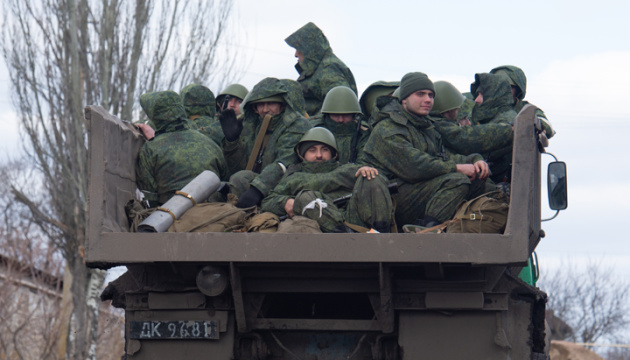
Unable to demonstrate true victories, Russia is trying to create an illusion of them. The goals of this disinformation campaign are diverse:
Influence on the West: To intimidate Western societies and politicians, to sow doubts about Ukraine’s ability to win, to ensure peace negotiations are on the Kremlin’s terms, and perhaps to influence decisions on aid (the hypothetical goal of “impressing Trump”).
Demoralize Ukrainians: To create within Ukraine an atmosphere of fear and the inevitability of defeat.
Such increased activity in the information space is a sign not of strength, but of weakness – an attempt to compensate the lack of tangible achievements with loud statements and propagandistic narratives.
What is Russia actually doing?
Instead of preparing for a mythical “grand offensive”, Russia continues to act within its limited capabilities. These are:
Local, exhausting offensive operations in several directions of priority, mainly in Donbas (Pokrovsk, Chasiv Yar, Kostyantynivka). The goal is not to achieve a strategic breakthrough, but to gradually push through Ukrainian defenses, capture individual settlements (often of symbolic, but little operational value) and the maximum possible exhaustion of the Ukrainian Defense Forces. This is a war of attrition that Russia is trying to wage, despite itself suffering huge losses both in manpower and equipment.
Persistent terror of air attacks. Against the background of its inability to achieve results on the battlefield, Russia is increasingly relying on air strikes targeting peaceful cities and civilian infrastructure. As defense analyst Oleksandr Musienko emphasizes, this is a systematic campaign of terror against the civilian population and critical infrastructure. The use of a large number of relatively cheap, own produced kamikaze drones (Iranian-designed Shahed and similar-class drones), combined with cruise and ballistic missile strikes not only aims to cripple the Ukrainian economy and energy sector, but also to demoralize the Ukrainian society and deplete its air defenses. This strategy, although useless in terms of battlefield success, is extremely destructive and dangerous. Incidentally, Russia launched 4,198 strike drones at Ukraine during March of this year, setting a new record for the number of UAVs launched in a month. The previous maximum of 3,901 drones launched was reported for February. Each of the 31 days in March saw air strikes, there was not a single night without drone and missile attacks. As Ukrinform reported recently, the enemy has changed tactics: now drone swarms purposefully attack one single target (for more details, see the link).
Conclusion note: Russia is unable to win on the battlefield, but that’s no reason to relax
To sum it up, a comprehensive analysis of the available facts and expert assessments leaves no doubt: loud statements and alarmist forecasts regarding Russia’s preparation for a fresh large-scale strategic offensive in 2025 have no real basis. The systemic crisis of human resources, a critical shortage of weapons and military equipment, the inability of its defense-industrial complex to compensate for losses, numerous tactical failures and the stalling of even the strategic offensive operation already ongoing – this all indicates that the Kremlin is physically unable to carry out an operation of that large scale.
Instead of preparing for a “major offensive,” Russia is forced to act within its significantly narrowed capabilities, continuing exhausting local attacks in Donbas and intensifying air terror against Ukrainian cities and infrastructure. Understanding this reality is important for an adequate assessment of the threats and for avoiding panic, which Russian propaganda is persistently trying to sow, in particular through Western media and quite often even some individual Ukrainian media. That said, however, this in no way diminishes the danger still presented by the Russian Federation, nor does it negate the urgent need for Ukraine to further strengthen its defenses, develop its indigenous technologies, and receive comprehensive support from partners.
Myroslav Liskovych. Kyiv

